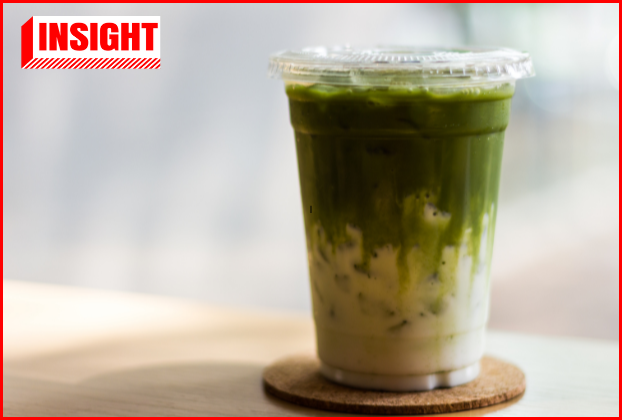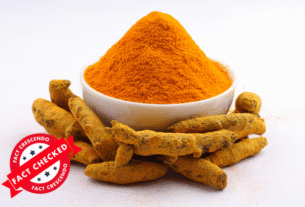As people become increasingly health-conscious, combining green tea with milk has grown in popularity. However, there have been debates on social media about the nutritional impact of drinking green tea with milk, with claims that it destroys green tea’s benefits and prevents calcium absorption.
Social Media Posts
Social media posts claim that consuming green tea with milk inhibits calcium absorption and negates the antioxidant benefits (catechins) of green tea.
Fact Check
Research Findings on Antioxidants (Catechins)
Research has found that green tea contains catechins, which are important antioxidants, while milk contains casein as its main protein, which can bind with polyphenols in tea. This binding can alter the properties of both substances and proteins. The EFSA research journal indicates that catechins in green tea can bind with milk proteins (casein), which may reduce the amount of “free” catechins.
Research published in Food Research International (2020) shows that adding milk to green tea can reduce its antioxidant properties. When researchers simulated digestion in the laboratory, they found that milk proteins bind with green tea’s beneficial compounds (catechins), which may lower the amount that our bodies can absorb and use.
Interestingly, other research suggests that milk might not significantly reduce the catechins our bodies can use from tea. A 2011 study in the Journal of Agricultural and Food Chemistry showed that while adding milk to black tea initially reduces catechin levels, the digestive process changes this. After digestion, the amount of catechins available for the body to use was similar whether the tea was consumed with or without milk. This is because during digestion, the milk proteins that were bound to tea compounds get broken down, releasing the catechins. Blood tests confirmed that people had similar levels of catechins regardless of whether they drank their tea with or without milk.
A 2013 study by Xie et al. revealed an interesting finding: adding milk to green tea could actually help your body absorb more of its beneficial compounds. The research focused on two main antioxidants in green tea: EGCG and ECG. When milk is added, its proteins initially bind with these antioxidants. However, during digestion, these proteins break down and can actually help transport the antioxidants through the intestinal wall, leading to higher antioxidant levels in the blood compared to drinking green tea by itself.
Studies have shown that milk’s effect on green tea’s antioxidants isn’t straightforward. When milk is added to green tea, its proteins do attach to some of the tea’s antioxidants. However, scientists have found that green tea still keeps most of its health benefits when consumed with milk. So while adding milk might slightly decrease the antioxidant content, it doesn’t cancel out the tea’s beneficial properties.
Research Findings on Calcium Absorption
Green tea contains compounds called oxalates and tannins that can interact with calcium from food. Research shows that green tea has relatively low levels of oxalates (0.23-1.15 mg/g) compared to black tea (4.68-5.11 mg/g). When tea is mixed with milk, these oxalates combine with calcium to form new compounds. According to a study in the European Journal of Clinical Nutrition (2003), when people drink black tea with milk, their bodies absorb very little oxalate (less than 2% in 24 hours) because it forms a substance called insoluble calcium oxalate.
Research in rats (Chang et al. 1994) found that tea tannins initially reduced how much calcium the body absorbed in the first week. However, the rats’ bodies adjusted to this change, after 4 weeks of regular consumption, calcium absorption went back to normal levels and didn’t affect the amount of calcium in their bones.
Research with human participants showed that people who drank 1.5 liters of black tea daily for 5 days had the same amount of calcium in their urine as those who didn’t drink tea at all. This suggests that tea doesn’t interfere with how our bodies process calcium. However, health authorities in some countries recommend avoiding drinking very high-calcium beverages together with foods high in oxalates, as this combination might reduce how much calcium your body can absorb (Source).
The FDA has investigated whether drinking tea with milk could lead to kidney stones (which are mostly made of calcium oxalate). While tea’s oxalic acid can combine with milk’s calcium to form calcium oxalate, this process happens naturally in our digestive system. The calcium oxalate formed this way simply passes through our body during digestion instead of building up to form kidney stones. However, the FDA recommends spacing out your consumption of high-calcium foods and high-oxalate foods to get the most calcium from your diet (Source).
Calcium Overview: When mixing green tea with milk, compounds can form in your digestive system that might limit how much calcium your body absorbs. But research on both humans and animals shows this isn’t a major concern. Human studies found that drinking tea with milk doesn’t significantly affect calcium levels in the body. Animal research suggests that even if there are any effects, they don’t last long and the body adapts. This means the claim that “calcium cannot be absorbed at all” is incorrect according to scientific evidence (Source).
Expert Opinions
Fact Crescendo consulted Dr. Jessada Denduangboripant, a professor in the Department of Biology at Chulalongkorn University’s Faculty of Science, regarding these claims. Dr. Jessada explained, “Drinking green tea with milk is not harmful; in fact, it increases nutrient intake while improving taste. While casein protein in milk does bind with tea’s catechins and somewhat reduces their benefits, soy milk or other plant-based milk alternatives can be used instead of dairy milk if preferred.”
An article from Healthline titled “Does Milk Block Antioxidants in Foods and Beverages?” examines this interaction. According to the article, while some studies show that milk’s casein protein can bind with antioxidants in tea, coffee, chocolate, and berries, reducing their efficiency by 11-27% in laboratory tests, other research has found either no effects or even positive results. Importantly, reduced antioxidant levels in lab conditions may not translate to real-world health impacts. Research shows that milk slightly reduces antioxidant activity in tea, but maintains most beneficial compounds. Studies indicate no significant reduction in health outcomes. Current evidence supports consuming tea with milk as part of an antioxidant-rich diet.
Conclusion
Research shows that drinking green tea with cow’s milk neither prevents calcium absorption nor eliminates the antioxidant benefits of green tea. While tea compounds (oxalates and tannins) can bind with calcium, and milk proteins may interact with tea’s antioxidants (catechins), these effects are minimal. Multiple studies have found that adding milk still preserves the beneficial properties of catechins, with no evidence of significant negative health impacts.
Studies show that when you drink green tea with milk, your body can still absorb the beneficial compounds from both: the antioxidants from tea and calcium from milk. However, if you want to get the most nutrients from your diet, you might want to drink your tea and calcium-rich foods at different times.

Title:Does Adding Milk to Green Tea Impact Its Health Benefits?
Fact Check By: Cielito WangResult: Insight






